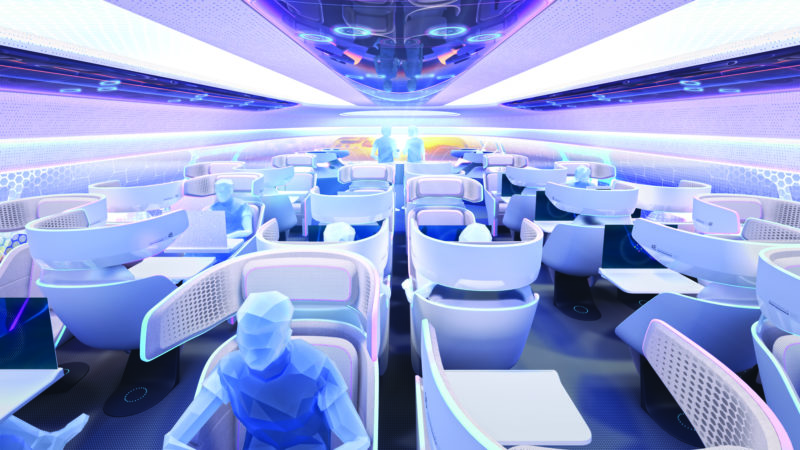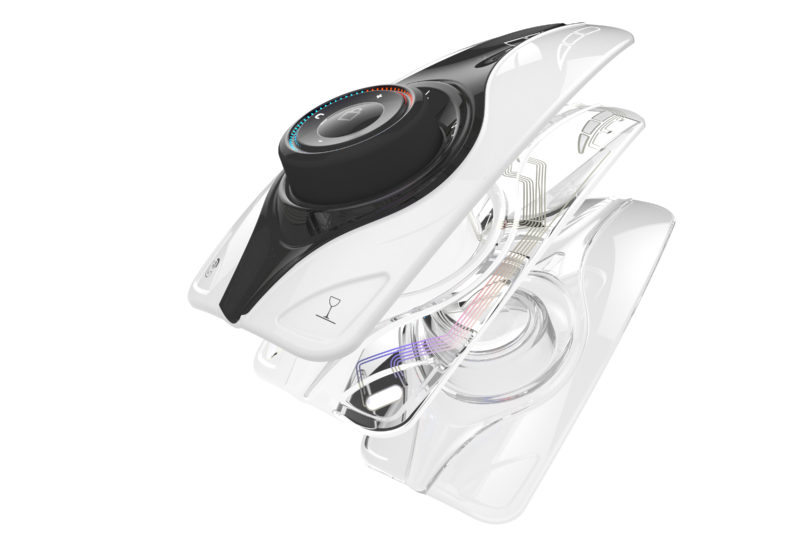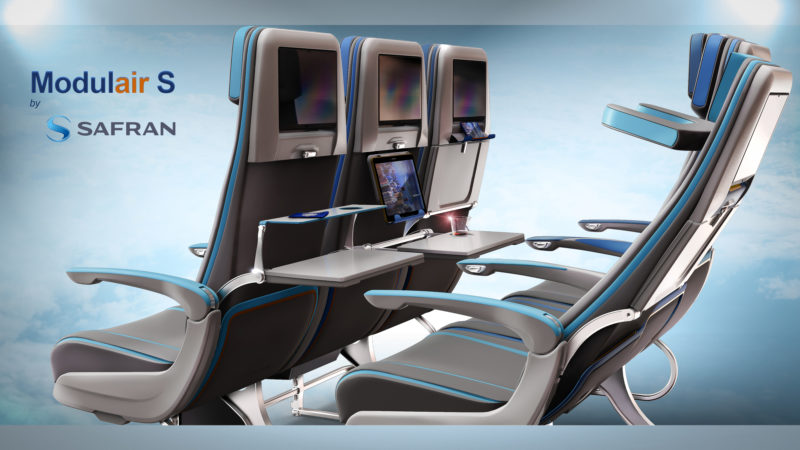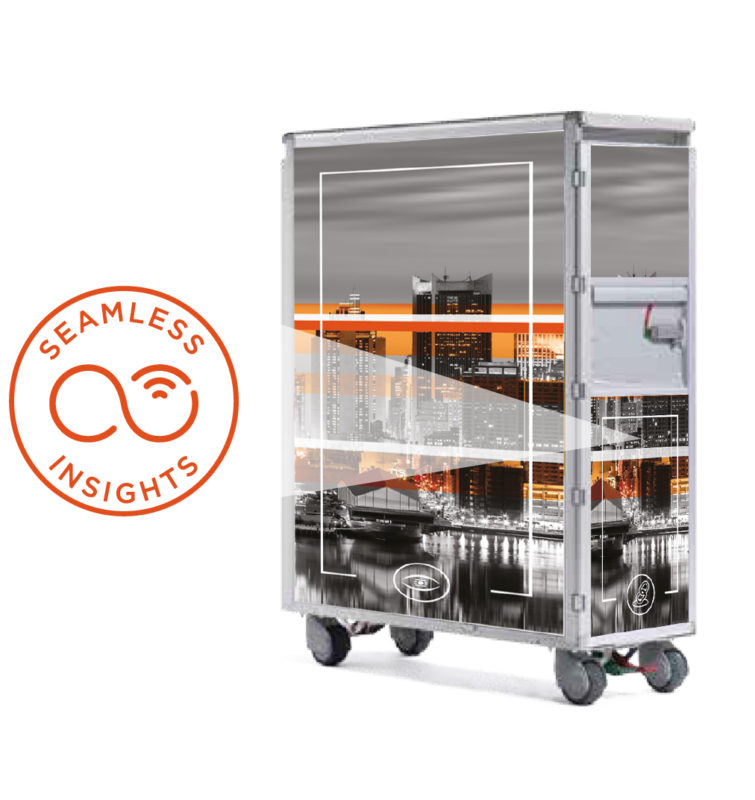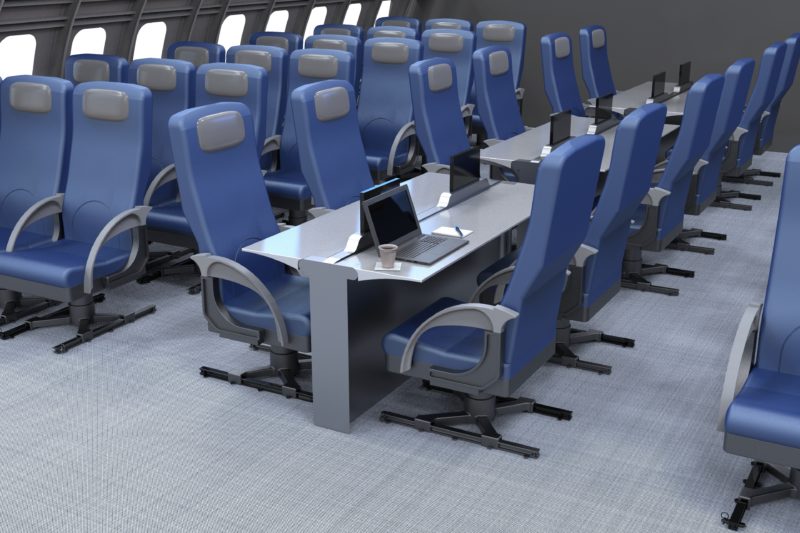At this time of year, Economy Class and Beyond would normally be on our spring travels. However, things are more than a little limited. However, for The Crystal Cabin Awards, the show went on today, with the winners announced today.
Let’s dive in and see what took home the awards today.
Cabin Concepts
Dealing with the future of the cabin, this was won by Eviation Aircraft, their Alice pure electric commuter jet. The company made its debut in 2019 at The Paris Airshow.
With the planned ability to carry nine passengers up to 1000, you’ll need an interior to match.
Almadesign of Portugal won a Crystal Cabin Award for their cabin concept, which features a fishbone seating layout. They beat out both Boeing for their 777X Sky Architecture concepts and Virgin Atlantic for their A350 Loft product.
Visionary Concepts
Dealing with concepts that are both viable and possible, Airbus Operations took the award for its Airspace Cabin Vision 2030.
Airspace Cabin Vision 2030 is an extension of the Airspace concept which digitally tailors the cabin to passenger needs and expanding the on-board experience with flexible seating and lounge configurations, for example, a gaming or family compartment.
Airbus beat out AIM Altitudes ARCA Galley System and AirGo Design’s Galaxy: Flatbed for the A321 concept.
Material and Components
e₂ip technologies along with the National Research Council of Canada brought forward something interesting – a panel based on In-Mold Electronics, surface-printed electrical circuitry that saves on complex, heavy cabin electronics.
The In-Mold Electronics control element can be seamlessly integrated into its environment, taking on a range of functions such as the positioning of the aircraft seat. Furthermore, the system is “retrofittable”, making it suitable for a wide range of existing aircraft.
They won, facing off against Diehl Aviation’s “Experience Line Bridge” and Schott AG (in cooperation with PriestmanGood) Jade reading light.
Greener Cabin, Health, Safety and Environment
Diehl Aviation took home the award for Greener Cabin, Health, Safety and Environment this year with their Greywater Reuse U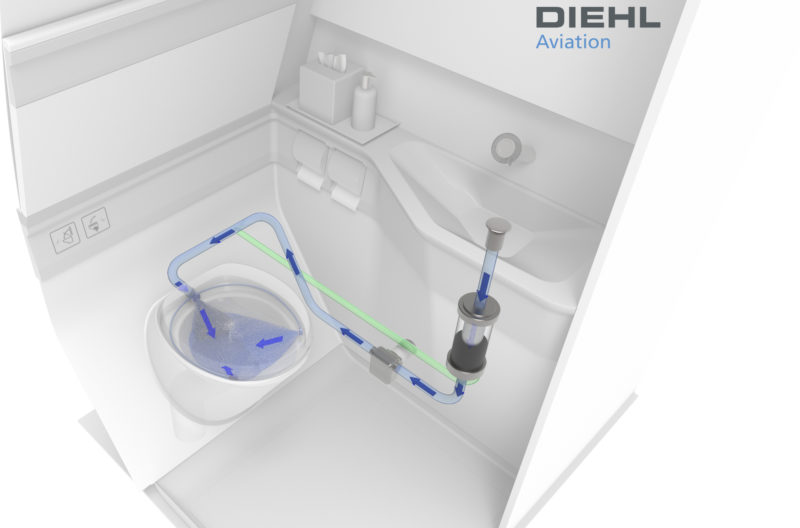 nit.
nit.
The company’s Greywater Reuse Unit makes it possible to re-use water from the handbasin to flush the lavatory, rather than tipping precious drinking water down the drain. As a result, the aircraft has to carry less water reserves, making it significantly lighter. For a Boeing 787, this means savings of up to 550 tonnes of CO2 per year.
Diehl Aviation contested this against ATR (in cooperation with Bacqueyrisses) for their AudioBack closed-loop hearing aid system and PriestmanGoode Zero economy meal tray, utilising coconut wood.
Passenger Comfort Hardware
Safran Seats took the gong for Passenger Comfort Hardware, with their Modulair S economy seat.
Developed in cooperation with the French university ENSCI, the seat can be extended with various features, bringing creature comforts such as neck support or a tablet holder to “cattle class” passengers.
Safran seating faced still conception from Ciara Crawford Row 1 Aircraft Wheelchair (allowing for a single seat wheelchair use between check-in and arrival) and Adient Aerospace’s “Space for All” allowing the conversion of a bulkhead row seat into a lounge seat or bed
Cabin Systems
Safran Cabin took a win again, this time for their SOPHY Smart Trolley Solution.
This tiny module is integrated with the catering trolley and provides the operator with information on the entire journey of the equipment, from maintenance and cleaning, needs to load.
It beat competition from SFS Intec & jetlite’s “lite2fix” and SITAONAIR’s Next-Gen Connectivity Mobile ONAIR 4G.
Inflight Entertainment & Connectivity
It seems that the love of Bluetooth Headphones, and using them in the air has won out this year, with Safran Passenger Solutions taking the win for its RAVE Bluetooth product.
The fact that passengers are increasingly using wireless headphones to enjoy onboard entertainment is a challenge for many airlines because conventional Bluetooth connections fail when the demand in the cabin reaches a certain level. helps out here, promising uninterrupted transmission throughout the aircraft.
A worthy win with waiting passenger demand, beating JetBlue Airways (with Thales Avionics, Spafax, Viasat & Astronics) Mult-Screen Experience and Spafax with Air Canada and their Spafax IQ data analytics platform.
University
Finally onto the University category, with the University of Cincinnati taking the win for their Coffee House Cabin.
This is a long table for meetings, productive work and coffee breaks that sits between a business class and economy class cabin. targeting the must-have needs of the business traveller; a dedicated workstation and personal space. It features space-efficient tables located in the centre of the aircraft.
This was designed by Alejandro Lozano Robledo developed the concept together with The Boeing Company and The Live Well Collaborative, beating out designs by HAW Hamburg and their ISOTRAVEL adaptor and Delft University and KLM for their Collapseable beds for The Flying V Concept.
A look into the future of the cabin
When we look at the Crystal Cabin Award, its winners and finalists, we are looking at products that are either near to market, at a market or out in the real world, celebrating that innovation is well and truly alive – even in these times.
And there is a lot here to drive forward the cabin here, with innovations across the cabin space.
With the changing environment, it will be interesting to see what innovations drive forward as OEM’s and manufacturers adjust to the changing passenger and airline requirements.
Welcome to Economy Class and Beyond – Your no-nonsense guide to network news, honest reviews, with in-depth coverage, unique research, as well as the humour and madness as I only know how to deliver.
Follow me on Twitter at @EconomyBeyond for the latest updates! You can follow me on Instagram too!
Also remember that we are part of the BoardingArea community, bringing you the latest frequent flyer news from around the world.

